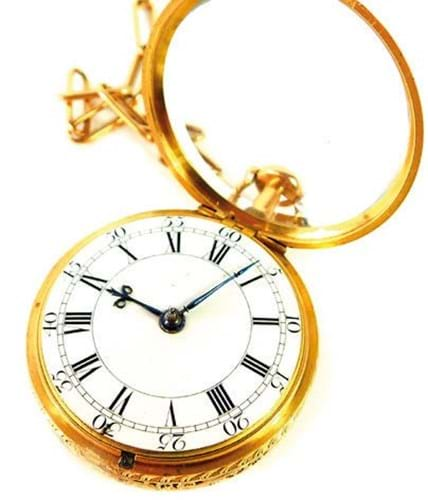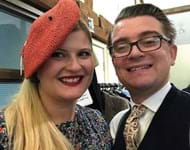
Most importantly, this 1766 hallmarked watch does not have a lever escapement. It retains its original Graham-type cylinder escapement and had not been later converted to lever as have many 18th century watches.
Interestingly, if the escapement had contained an original detached lever it would predate Mudge’s most famous and earliest known lever watch, the ‘Queen’s watch’. This is housed in a gold case hallmarked 1769 and remains in the Royal Collection at Windsor Castle. As perhaps the most important pocket watch ever made, I would, by owning an earlier example, have been looking forward to a handsome profit.
As it is, the price I paid for No 721 really was not “all in the maker’s name” as you wrote, but all in the quality of its manufacture which, as usual for this firm, was unsurpassed. It is also one of the few watches of this period to have survived with an enamel dial in perfect unblemished condition, as is much of the watch.
Booklet not influential
The small booklet of 1765 by Mudge mentioned was also not at all influential. Written hastily in 1763 prior to what was Mudge’s work as one of the ‘experts’ employed by the Board of Longitude at the proposed ‘discovery’ of Harrison’s timekeeper now known as H4, it was privately published and given to just a few friends and members of the Board.
It was written only in order to stop any possible accusations of plagiarism regarding a longitude timekeeper of his own that was clearly in Mudge’s mind at the time, and which he completed in 1774.
Few if any watchmakers would have been aware of this work until it was reprinted by Mudge’s son in 1799, but its thoughts on using a constant-force escapement led Mudge to create a far more accurate timekeeper than any other produced in the 18th century – that includes the work of Harrison, Arnold and Earnshaw.
Mudge No 1, as it has come to be known (on show at the British Museum), had a tested rate that was not bettered for almost a hundred years, yet sadly I feel few of your readers will have heard of Thomas Mudge, truly one of England’s greatest-ever watch, clock and chronometer makers.
David Penney
Antiquarian horologist and horological consultant












